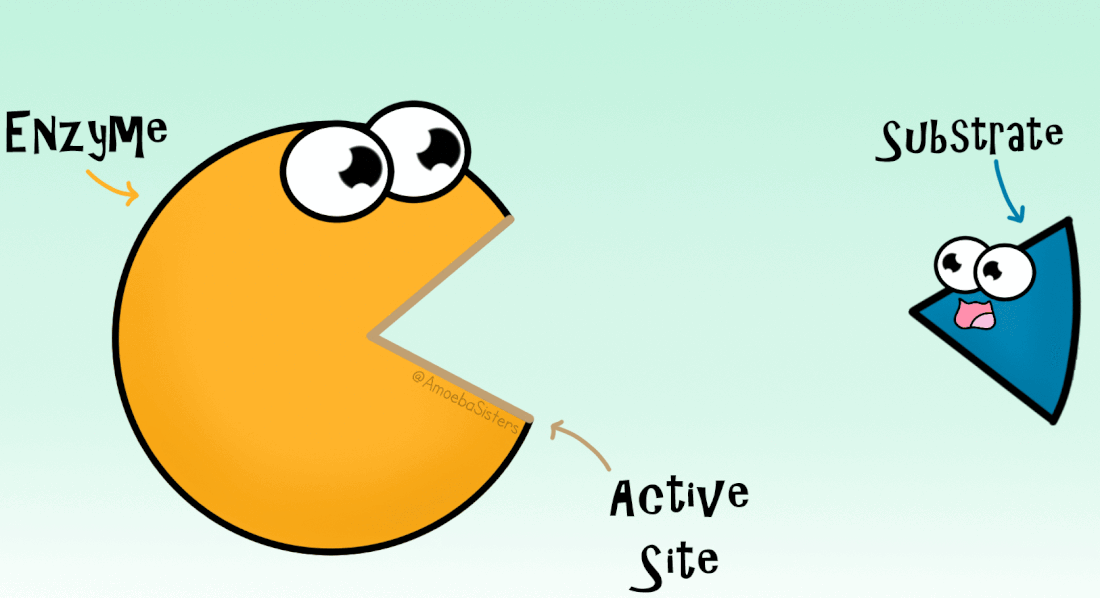Enzymes

Ever wondered how the food you eat gets digested? Well, a group of very important proteins, known as enzymes, play a critical role in breaking down food in your body! Enzymes are biological catalysts— this means they help to accelerate the rate of metabolic reactions in the cells by reducing the activation energy of the reactants. Enzymes are proteins, and hence, they have a specific 3D conformation as a result of the unique twisting and folding of the polypeptide chain. Therefore, enzymes are highly specific.
What do we mean by “specific”? Well, specificity is the ability of an enzyme to bind to a particular substrate only, and thus, it will only be able to catalyse a particular reaction [1]. This specificity is a molecule recognition mechanism and it operates through the conformational and structural complementarity between the enzyme and substrate. 
1. Bond Specificity
Enzymes that show bond specificity are specific to substrates having similar bonds and structure [1]. Therefore, they bind to substrates that contain specific bonds only, such as ester bonds, glycosidic bonds and peptide bonds. An example of such an enzyme is α-amylase. α-amylase can only hydrolyse α-1,4-glycosidic bonds in starch and glycogen, and not any other types of bonds.
2. Group Specificity
Enzymes that show bond specificity are specific to substrates having similar bonds and structure [1]. Therefore, they bind to substrates that contain specific bonds only, such as ester bonds, glycosidic bonds and peptide bonds. An example of such an enzyme is α-amylase. α-amylase can only hydrolyse α-1,4-glycosidic bonds in starch and glycogen, and not any other types of bonds.
3. Substrate Specificity
Substrate specificity is also known as absolute specificity. Enzymes showing substrate specificity are only specific to one substrate and one reaction [1]. This can be explained through the lock and key theory, which states that the enzyme has a rigid active site which can only fit substrates with the complementary 3D configuration, explaining the high specificity of such enzymes.
4. Optical Specificity
Optical specificity of enzymes is also known as stereo-specificity. Enzymes showing optical specificity are not only specific to the substrate, but also to its optical configuration [1]. For such enzymes, the spatial arrangement of the substrate is critical in determining if the enzyme will be able to catalyse the reaction. An example of such an enzyme showing optical specificity is the L-amino acid oxidase. L-amino acid oxidase can only bind specifically to L-amino acids. Conversely, D-amino acid oxidase can only catalyse reactions involving D-amino acids.
5. Geometrical Specificity
In geometrical specificity, an enzyme can bind to different substrate that have similar molecular geometry [1]. Therefore, specificity is lower in this case. An example of such an enzyme is alcohol dehydrogenase, which is able to catalyse both methanol and ethanol since they have similar molecular geometry.
6. Co-factor Specificity
Co-factors are the non-protein parts of some enzymes, and are required for the proper functioning of these enzymes [1]. Enzymes which require co-factors for their activity show co-factor specificity. The enzyme can only catalyse a reaction in the presence of the correct substrate and co-factor. In the absence of the specific co-factor, the enzyme will be inactive, even if many substrates are available.
Receptors
Receptors are another type of protein that can be found extensively in our body. Receptors are found on cell surface membranes and are composed of an extracellular and intracellular domain. Receptors receive chemical signals from outside a cell. When such chemical signals, known as ligands, bind to a receptor, they trigger a series of cell-signalling pathways, ultimately resulting in cellular or tissue response [2].
As the extracellular domain of a receptor also has a specific 3D conformation due to the twisting and folding of the polypeptide chain, binding of an extracellular signal to its receptor involves the same type of interactions as those between an enzyme and its substrate. Receptor specificity thus depends on the binding affinity between the ligand and the binding site on the receptor [2].
References
- Enzyme Specificity. Available from: https://www.easybiologyclass.com/enzyme-substrate-specificity-types-classification/
- Cell Signalling. 2014; Available from: https://www.nature.com/scitable/topicpage/cell-signaling-14047077.


